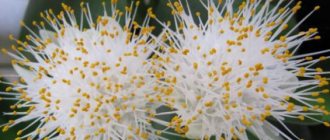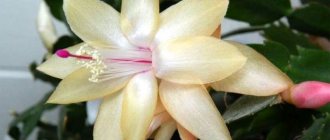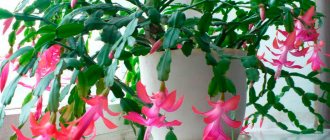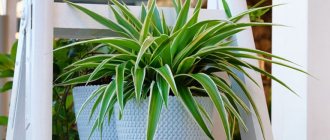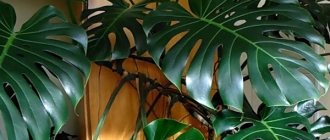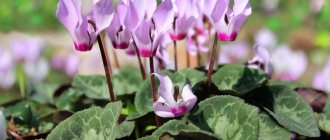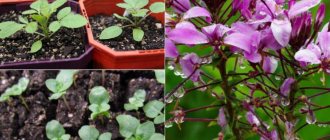Woolly Chistets (also known as Stachys Byzantine) is popularly called differently: hare's ears, blackberry, tenacious .
A perennial herbaceous ornamental plant from the Lamiaceae family, with a creeping rhizome, pubescent oblong silvery leaves and a pleasant aroma of small pink flowers.
It reaches a height of 40 cm, the flowering period lasts all summer. The fruit is a nut with three sides.
It grows wild in central Eurasia and Mediterranean countries, the Caucasus, and sometimes in Africa.
The plant is perennial, blooms all summer, height up to 40 cm
Woolly chick (Stachys lanata)
Syn.: stachys, Byzantine chist, hare's ears, tenacious, kolyutnik, sheep's ears, grate, black gill, blackberry.
Woolly chistets is a herbaceous garden and ornamental plant with silvery, pubescent leaves and spike-shaped lilac inflorescences, which has some healing properties and is used in folk medicine.
Table of contents
In medicine
Woolly chickweed is not a pharmacopoeial plant and is not used by official medicine, but its healing properties are successfully used in folk medicine. Chistets woolly has a hypotensive, cardiotonic, antispasmodic effect on the human body. The plant has a stimulating effect on the contraction of the muscles of the walls of the uterus, and is successfully used during labor in women, providing an antispasmodic and hemostatic effect. In order to lower blood pressure or reduce the amplitude of heart contractions, use a dry extract, decoction or tincture of the woolly aster. Decoctions from the rhizome of the plant help with colic, spasms of the intestines and stomach, and have an antispasmodic effect. Decoctions of crushed roots of chistets are effective for colds and tuberculosis. Alcohol tinctures from chistets are effective for disorders and diseases of the nervous system; lotions from a decoction of the herb help with eczema, dermatological diseases, mastopathy, and scrofula. Medicinal mixtures with chistets are used for epilepsy and hysteria.
Contraindications and side effects
Despite many beneficial properties, woolly chickweed also has some contraindications. The plant is not used for hepatitis, chronic and acute nephritis, bronchial asthma, atherosclerosis, hypertension, angina pectoris, and convulsions. Contraindications of chistets apply to children, women during pregnancy and lactation, with individual intolerance and allergic manifestations. Woolly Chistets is a low-toxic plant compared to some species of the Chistets genus. An increased dosage when using plant-based products can provoke allergies and poisoning.
In gardening
Woolly chistets is an ideal ornamental garden plant for edging flower beds, borders, and is used in combination with other plants in carpet compositions. It forms an even, thick and dense silvery cover, which contrasts perfectly with the green foliage of other plants and the bright colors of their flowers. Peduncles are pruned immediately after flowering to promote the appearance of new shoots. Chistets are often planted in mixborders, on alpine hills, to which this plant gives a special effect.
The woolly chist has been in culture since 1782. The plant is winter-hardy, unpretentious in care, and light-loving. In sunny areas the plant is especially decorative: the leaves grow larger and acquire a bluish-silver tint. Chistets grows well in any well-drained soil. Propagated by seeds (self-sowing) and vegetatively - by dividing the bush and cuttings. Caring for the chickweed consists of promptly restoring the thinned cover and trimming the flower stalks after they have faded. Many varieties of woolly grass have been bred, among them low-growing shrubs are popular: “Sheep Ears”, “Marvel”, about 30 cm in height.
In cooking
The tubers of the woolly chest are edible and are eaten like potatoes or asparagus. The roots of the plant have long been ground into flour and baked into bread. In Brazil, they prepare a national dish made from the woolly cactus - Lambari.
In other areas
Chistets fatty oil is used to prepare high-quality drying oil. Green fabric dye is obtained from the stems and leaves of the plant. Chistets is an excellent honey plant.
Classification
Woolly Chistets (lat. Stachys lanata) is considered the most decorative species of the numerous genus Chistets (lat. Stachys), which includes up to 400 species. The correct botanical name of the plant is Byzantine Chistets (lat. Stachys byzantina). Belongs to the Lamiaceae family (lat. Lamiaceae).
Botanical description
Woolly chickweed is a perennial rhizomatous plant, a subshrub, the stems of which are erect, tetrahedral in shape, weakly leafy, but densely pubescent, reaching 50-60 cm in height.
The root system has the form of underground shoots with thickenings - small tubers. The lower leaves of the chistema are lanceolate, up to 12 cm in length, pointed, heart-shaped or rounded at the base, placed on short petioles, arranged oppositely. The upper bracts are ovate-lanceolate, sessile, long-pointed. The leaf blades have felt pubescence and a silvery tint. Chistema blooms for a long time - up to 50 days. The inflorescence of the chistema is spike-shaped - a false whorl, consisting of 6 - 10 flowers. The bracts are linear, the calyx is two-lipped, the corolla is purple, lilac or purple-lilac. The fruit of the chistets is a triangular nut of a dark brown hue, oval in shape. The flowering period of the plant is June – September; the fruits ripen in early autumn.
Spreading
The woolly chist is found in the Mediterranean countries, in temperate regions of Asia (from Iran to China), and in Europe. In Russia, the plant is distributed in the southern and middle zones, as well as in western Siberia and Altai.
Chistets woolly, Stahis, Ram's ears
Byzantine chickweed (Stachis bizantina), or woolly chickweed (Stachis lanata) is often called stachis.
Stachys translated from Greek means ear of corn. The plant is popularly nicknamed “ram’s ears.” The plant received this name for a reason: to the touch it strongly resembles the ears of sheep and rams.
Chistets Byzantine is a perennial herbaceous plant belonging to the family Lamiaceae, or Lamiaceae. This is an unpretentious, but catchy and colorful plant.
The plant is characterized by a tetrahedral stem and ovate-lanceolate elongated leaves with an opposite arrangement.
Peduncles appear in May-August and reach a length of 40-50 centimeters. They bear small flowers characteristic of the family, collected in an inflorescence of spikes, not particularly decorative. They are painted in pinkish or purple shades.
Spreading
The homeland of Stachys is Asia Minor and the Balkans. Here it is found in the wild. Over time, the woolly chickweed spread to Europe and Asia, where it became a cultivated plant.
“Ram ears” are very popular among Russian residents and are found in almost every garden. This plant grows well in the middle zone, without requiring shelter in winter.
Chistets Byzantine is an unpretentious plant that does not require special care. It grows on any soil, but prefers fertile sandy loam soils, where it grows luxuriantly and takes on a more decorative appearance.
The plant is drought-resistant and loves dry, well-drained places. External irrigation turns stachys into a “wet chicken”. Overwatering can cause rot.
Prefers sunny areas, but does well in light shade. Does not require watering or fertilizing.
The woolly chist quickly captures new territories thanks to its creeping and rooting shoots. During the season, “lamb ears” can advance half a meter. Therefore, the main care consists of removing excess shoots and peduncles.
Peduncles must be cut to prevent fruiting, which can lead to unwanted self-seeding. In addition, flowering causes the plant to stretch and lose its decorative appearance.
But although the chickweed is somewhat aggressive, it is not a dangerous weed: its root system is located in the top layer of soil and is easily pulled out by hand.
Diseases and pests
Diseases and pests very rarely affect Stachys woolly.
Features of Sansevieria
The originality of this plant lies in the absence of a stem. This is very clearly visible in the photo. Very wide leaves, pointed towards the top. They originate from one nest, and as they grow, they rush to the top. Therefore, a solid bush really resembles pike tails stuck into the ground.
The height of the leaf depends on the specific type of plant. You can find leaves reaching one meter at home, or you can see a “pike tail” that has very short leaves , but there are a lot of them, and they originate from one rosette.
This plant, which requires careful care at home, belongs to the class of evergreens and is found in Africa and the Asian tropics. “Pike tail” has a creeping rhizome, its leaves are covered with a waxy coating, of a very dense consistency.
This coating protects the leaves, preventing moisture from evaporating. Therefore, the plant may feel good under short-term drought conditions. It calmly tolerates dry indoor air.
Only a small number of gardeners who grow and properly care for “pike tail” at home know that this plant is not considered an ornamental foliage; it has the ability to bloom .
Its buds begin to set on a very thin peduncle, which originates from one or several rosettes with leaves. The petals of the flower usually have a white-green tint.
“Sheep ears” in the flowerbed
Chistets Byzantina, also known as Stachys woolly, also known as “sheep’s ears,” is a charming and unpretentious plant with silvery fluffy leaves.
Chistets woolly. Photo by the author
It settled in my garden a long time ago: a neighbor shared the shoots, which have since turned into luxurious fleecy “rugs” and spread in different flower beds. Of course, these “ears” also came to the new garden.
The plants are still small, but next season they will form a nice lawn, and in a year the chickweed can be spread further.
Young plant of chistets. Photo by the author
There are countless options for using this plant in flower beds. This is an excellent border : the bushes without flower stalks are not tall, grow very densely and, due to the elegant silver color of the foliage, create an impressive frame for a flower bed or garden path.
The woolly chickweed looks great and feels great in rockeries , on retaining walls , and in rocky gardens . It is undemanding to the soil, tolerates drought easily, loves light - an ideal plant for a rock garden.
Chistets seeds and seedlings are presented in our catalog by various online stores. View the selection.
On the other hand, it also grows well in partial shade, and therefore can be successfully planted under bushes. In such a composition, the cool color and unusual texture of chistets leaves can become a winning accent. It is only important to make sure that the shadow is not too thick, and that the neighbors are undemanding when it comes to food. On too fertile soil and insufficient lighting, sheep's ears can turn green and lose their charm.
with other decorative foliage plants leave endless scope for imagination . Here, for example, is how it nestled between my hostas and cypress spurge on the shore of a pond
Chistets with hostas by the pond. Photo by the author
The Chistets' own flowers are nothing special, and the tall, often unstable peduncles make the plantings untidy. So I try to cut them off; when the plant is grown as an ornamental foliage, this procedure is very desirable. Moreover, caring for the cleaner actually ends there.
But how expressive the luxurious, silky foliage is against the background of other flowers! Thanks to its neutral color, chistets are appropriate in almost any composition, and will look new every time. I especially like restrained, noble combinations with blue and white flowers, but red, yellow, pink, and lilac look, perhaps, no worse. Here, admire, for example: chives against the background of blooming chives
Woolly Chistets against the background of chives. Photo by the author
By the way, both spring and autumn are suitable planting woolly grass At the same time, you can divide old, overgrown plants, the rooted shoots of which are easily separated and take root well in a new place.
I read that in regions where winters are harsh, light shelter for plants is recommended, but mine winters well without it. And in early spring, it is enough just to remove the old, browned and dried foliage and take care that water does not stagnate at the roots of the plant - this is its main enemy , causing root rot and death of the plant.
I also like to stroke the leaves, which are soft and extremely pleasant to the touch. Great mood lifter!
Leaf of the woolly chickweed. Photo by the author
If you don't yet have chickweed growing in your garden, try finding a small corner for it. I'm sure you will definitely love these nice “sheep ears”!
Woolly chistets - description, varieties, planting and care
Chistets is a herbaceous perennial plant often referred to as sheep's ear. this name due to its fleecy leaves, which look very similar to the ears of an animal. Another name is stachys. Translated, the word means “spike,” which characterizes the inflorescences produced. The plant is used as a decorative element to frame a flower bed or path; it also looks good in rockeries and other rocky compositions. Chistets have no special requirements for soil and easily tolerate a lack of moisture.
Diseases
Hare's ears are a fairly hardy flower and are rarely attacked by insects. Sometimes he is attacked by spider mites. In this case, the plant should be sprayed with wormwood infusion and watered with Aktara solution. Sometimes the plant's bulb rots. A similar problem can arise, as already mentioned, as a result of excessive watering and stagnation of water in the pot.
As you can see, bunny ears are an extremely unpretentious flower. All that is needed to achieve spectacular flowering is to water it from time to time and fertilize it occasionally. It can be a very good decoration for an apartment. Hemanthus is especially beautiful in summer, during flowering, which lasts about a month.
general description
Stachys belongs to the Chistets genus and the Lamiaceae family. In the wild, the plant can be found in Armenia, Iran, Ukraine, and Turkey. Also found in the southern territories of Russia. Prefers mountain slopes, rocky terrain in mixed coniferous forests.
The subshrub grows up to 60 cm in height due to inflorescences, but the main part of the plant rarely exceeds the threshold of 20-30 cm. The root system is weakly branched and goes quite deep into the ground. In one season, many shoots grow from the rhizome, which soon form real thickets of chistema.
The stems are straight or branched, silver-gray in color, and have a characteristic felt covering. The leaves are considered the most decorative and attractive part of the plant - they are gray-green in color, pubescent due to numerous fibers.
In the photo of the chistets you can see its inflorescences. They are a spike on which there are many small flowers. They do not have any special decorative effect, so many gardeners simply cut them off. The color of the petals is pink or lilac, with long stamens protruding at the top.
At the end of the season, under favorable conditions, stachys produces a lot of seeds. The tubers of the plant are used as food. They are especially useful for diabetics, due to lowering blood sugar. In principle, all chistets are recognized as medicinal, and tinctures and decoctions are made from it.
Donkey ears flower
In the interior of residential or public buildings, you can see an indoor plant, sansevieria, which is striking in its ease of care and endurance, which is excellent for landscaping homes and offices. And to the surprise of those who are far from botany, it belongs to the asparagus family. About sixty species are known in nature. At home, we most often encounter and observe the growth of the many species of these flowers without a stem, three species: Sansevieria three-striped from the Latin name - trifasciata, cylindrical and large.
In common parlance, sansevieria is called differently: in Russia - “pike tail”, in England - “mother-in-law’s tongue”, in America - “snake plant”, and in its homeland, South Africa - “donkey ears”. The herbaceous plant that has settled in our homes is a perennial with a strong creeping rhizome and long, straight, dense leaves.
The color of the leaves is usually striped, depending to a greater or lesser extent on the variety and species, sometimes with a yellow bordering stripe. During flowering, “mother-in-law’s tongue - pike tail” releases into the light of God an arrow with inflorescences - small openwork, collected in a brush with white fragrant flowers with a slight hint of green.
Woolly Chistets: planting and care
The plant is quite unpretentious both in terms of reproduction and subsequent care. The most favorable location is in the sun, with some shade allowed. Almost any soil is suitable, watering is moderate - it is better to underwater the plant. Read more about all the points below.
Reproduction
The appearance of new representatives of the species is ensured by generative (seeds) or vegetative (dividing a bush or rhizome, cuttings) method. Seeds are sown immediately in open ground or for seedlings. In the first case, sowing is carried out in the fall, in the second - in the spring (March).
To grow seedlings, use an appropriate container filled with a soil mixture of sand and peat. The seeds do not go very deep; they need to be sprinkled with a little soil on top.
The container is covered with film and placed in a warm place. Ventilation is carried out daily. The seedlings are thinned out without replanting. When the seedlings reach the development of several leaves, they are planted outside. Typically, appropriate conditions occur in May. The sprouts cope well with transplantation and quickly take root in a new place.
It should be noted that the leaves of young plants are not fleecy at first. Characteristic hairs appear with age.
Vegetative division of Stachys woolly is carried out in spring or cool summer. You can break the bush into several parts directly in the ground using a shovel. If you want to act more delicately, then the plant is completely dug up, shaken off the ground and divided. Newly formed bushes are immediately planted in a permanent place of growth.
Division can be done using the root itself. It is also divided into parts and simply planted in the ground.
The lower parts of the shoots, which have 2-4 leaves, are suitable for cuttings. The leaves themselves, separated from the lower rosettes, are also used. The cutting method can be carried out throughout the entire growing season. To root the shoots, they are placed in a moistened mixture of peat and sand. The substrate is kept moist until the plant takes root - this happens on average after 2 weeks. Then it is transplanted to a permanent place.
Rules of care
Byzantine chistets are so adored by many gardeners precisely because they are unpretentious in care. All activities come down to periodic watering, fertilizing, removing flower stalks and planting new bushes. Pests do not attack the plant, and it rarely suffers from diseases.
The nuances of watering and loosening the soil:
- Stachys is resistant to drought and stagnation of moisture in the roots is very undesirable for it, which can cause rotting.
The plant does not require frequent feeding, although it will be “grateful” for compost added to the soil. To enhance growth, you can use ammonium nitrate mixed with chicken droppings. This feeding is done rarely and in minimal doses.
If the bear's ear flower shown in the photo is a decorative element of the garden, then it is very important to prune it. The neat appearance of the fleecy leaves is achieved by removing periodically occurring peduncles. A bush with inflorescences thrown up loses its compact appearance and becomes less attractive from an aesthetic point of view. Peduncles are removed as close to the ground as possible, and dry and spoiled leaves are removed along the way.
In the spring, sanitary treatment is carried out over the stakhis: dry shoots and leaves, bare rhizomes are cut off. Bushes that have grown beyond the designated area are also If the chickweed is planted as a ground cover plant, then you will have to deal with bald spots by planting new bushes. Gaps in the shoots appear in the 3-4th year of the plant’s life.
Chistets are resistant to frost, so shelter for the winter is only necessary in the event of severe winters. As protection, the plant is covered with spruce branches or dry leaves. It is extremely important not to forget to open the flower in time in the spring - much more often it rots rather than freezes.
Disease Control
The “donkey ears” flower is not attacked by pests; very rarely, troubles can arise only in relation to diseases. If the plant is infected with a fungus, the reason for this is high humidity. It is necessary to ensure free passage of air between the shoots and drying of the soil.
Spraying with fungicides is used to kill the fungus. If the bush is severely affected, it is better to dig it up and burn it - this will prevent further spread of the disease.
Sansevieria care at home
As a house flower, it is not demanding of light and heat.
“Pike tail” can grow in a place heavily illuminated by the sun and in deep shade, at high temperatures in very warm rooms, and also withstands coolness - temperatures up to +12 degrees Celsius. In summer, indoor sansevieria will require more careful care. In summer, the plant needs abundant watering, in winter - moderate, but do not overwater so that the roots do not rot. In winter, this home flower rests and is best kept in a cool room.
In offices, it calmly accepts the small presence of natural light and gratefully perceives even light from fluorescent and incandescent lamps, which makes it an advantageous plant for interior design.
Beneficial features
In the course of official research, it was found that the woolly chickweed stops bleeding, is an antiseptic and analgesic, helps heal wounds and enhance urination. It is low-toxic and destroys staphylococci and microbes. In addition, “sheep's ears” help calm the nervous system and lower blood pressure.
The alkaloid stachidrine, which is part of the composition, enhances blood clotting. The substance raises the tone and increases the intensity of uterine contractions - these properties make it possible to use the cleaner during uterine bleeding and during the period of recovery of the genital organs after childbirth.
Having memorized stachys from a photo, it can also be used in folk medicine. The tubers are crushed into powder and are included in decoctions that help improve expectoration, cure sore throat and tuberculosis. An aqueous decoction of the leaves has a positive effect on the heart muscle and reduces blood pressure.
Alcohol tincture soothes and stops uterine bleeding. The infusion treats skin diseases, scrofula, gout, neurosis, and depressive conditions. A fresh leaf picked from a bush helps remove an abscess and heals a cut, wound or ulcer. Quite often, stachys is part of medicinal preparations that help with epilepsy, hysterics and fainting. Its active substances lower glucose levels, therefore they are indicated for people suffering from a mild form of diabetes.
The benefits of sansevieria for the home and its inhabitants
In addition to gracefulness and unpretentiousness, sansevieria will delight flower growers with the following advantages:
- releases a really large amount of oxygen, and not many plants are distinguished by this,
- significantly purifies the air in the room, destroying bacteria,
- increases immunity and normalizes metabolism in those who are constantly nearby,
- neutralizes harmful fumes from paint and furniture,
- in China they believe that the flower absorbs all the negative energy in the house, and they are very revered,
- Sansevieria is a real home healer that helps with cystitis and inflammation of the appendages. Also, using the juice extracted from the leaves of the flower, you can cure otitis media and stop inflammation in ulcerative skin lesions. The smoke of burning leaves has long been used as a remedy for headaches.
Also, be sure to place the pot with “mother-in-law’s tongue” near the computer and TV - it will absorb most of the harmful radiation.
According to Feng Shui, sansevieria in the classroom will help the assimilation of new knowledge, absorb anger, rudeness and envy; in return, it will fill the room with an atmosphere of creativity and reflection. Due to these properties, it is recommended to place a pot with this unassuming peacemaker flower in those rooms where quarrels, disputes, and conflict situations may arise.
Chistets woolly sheep ears Growing from seeds Planting and care Photos in landscape design
Woolly chist, sheep's ear or woolly stachys (lat. Stachys byzantina) is a perennial herbaceous plant 20-60 cm high from the Lamiaceae family. Oblong leaves with felt pubescence, which you just want to stroke, sit opposite on erect stems. Thanks to its interesting appearance, the popular name for stahis is sheep's ears. The dark green shade of the leaves emphasizes the white-silver pubescence. The stems are erect and branched.
Stachys woolly blooms from May to August. Whorls of pretty pink flowers form a spike-shaped inflorescence. Flower growers are very attracted to the leaves and in most cases the inflorescences are picked before they bloom. Already in the first year a lawn will form, and in the next season you will get an almost continuous mat.
In the wild, the Byzantine chist is found in Iran, Armenia, Turkey, the Caucasus, and the Black Sea region.
Sheep ears are propagated by seeds and vegetatively (dividing the bush, cuttings).
How to plant bunny ears in the garden
To plant the plant, you should choose a sunny or slightly shaded area in the garden at midday. Woolly Chest does well in dry areas. Excessive moisture is detrimental to the root of the plant, and the leaves lose their decorative effect and the main feature - pubescence. The soil for planting should be well-drained, light, alkaline or neutral acidity.
Planting stages:
- The area for planting seedlings is prepared in advance. You should dig it up and add fertilizer: 20 g of potassium sulfate and 50 g of superphosphate.
- In May, holes are dug 30 cm deep.
- The bottom of the hole is filled with drainage made of pebbles, stones, expanded clay and sprinkled with earth mixed with humus.
- The seedling is placed in a planting hole and covered with earth.
Chistets sheep ears growing from seeds
Chistets stakhis sheep ears seeds photo
In warm regions, they are sown immediately in open ground in spring or before winter. Simply dig up the area, scatter the seeds and cover with a rake. If winters are harsh in your area, it is better to take care of growing seedlings.
The seeds germinate quickly (from 5 to 10 days) and without problems, and the seedlings are tolerant of transplantation; they can even “roam” around the site several times a season.
You can germinate without shelter, just try to spray the soil daily, diffused lighting is required, and maintain the temperature within 20-25 °C.
Chistets woolly stachys sheep ears from seeds photo shoots
- If necessary, thin out dense seedlings; before transplanting into open ground, seedlings can be grown in the same container.
- Dig holes according to the size of the root system, transfer the seedlings along with the earthen ball, and when planting, maintain a gap of about 15 cm.
A few words about the propagation of sansevieria
Like most indoor plants, replanting, and at the same time propagation, is carried out in the spring, every two to three years. It is better to take pots and flowerpots for a new place of growth that are wide and low, and if there are none, then sprinkle broken shards on the bottom of an ordinary pot. On top of them, so that the water does not stagnate at the bottom and the roots do not rot, place a small layer of sand. Prepare the soil mixture for replanting that is loose and permeable. To do this, take two parts of forest soil (from a deciduous forest), two parts of meadow soil (from under turf), add one part of sand, preferably coarse-grained river sand. In addition, it is good to add crushed clay products (break an old pot and crush them), bricks and charcoal to this mixture.
Vegetative propagation of Stachys
Dividing the bush
How to divide a bush of Stachys woolly
After 2-3 years of growth, the Byzantine chistets can already be divided. In the spring, carefully dig up the bush along with a lump of earth, preferably manually divide it into several parts and plant it in separate holes at a distance of 15-20 cm from each other.
Propagation by cuttings
Cuttings (shoots with 2-4 leaves or individual leaves from the bottom of the stem) can be cut throughout the season; they take root in 2-3 weeks. Plant in a moist mixture of sand and peat, but water sparingly to prevent them from rotting. When signs of growth appear, they can be planted separately.
Landing area
Sheep ears in the garden photo
It should be noted that when grown in too fertile soil, the leaves of stachys may become simply green, and the decorative pubescence will be lost. The best option would be loose soil of average fertility.
Areas under bright light, as well as in the diffuse shade of shrubs and trees, are suitable for planting. In cool lighting, the texture of the leaves stands out very effectively.
It cannot be grown in lowlands and flooded areas, since dampness is the main “enemy” of stachys.
What are the benefits of culture
The benefits of sansevieria are well known to many experienced amateur gardeners who have been growing this unusual indoor plant at home for many years.
The main beneficial properties and advantages of growing ornamental crops are as follows:
- the plant actually releases a very significant amount of oxygen, which improves the condition of people suffering from diseases of the respiratory system;
- the plant helps to significantly clean the air in the room, which is due to the destruction of bacterial microflora;
- when indoor cultivation of an ornamental plant, an increase in immunity and normalization of metabolic processes are noted;
- decorative culture very effectively neutralizes all harmful and toxic fumes emitted by interior paint and new furniture;
- Sansevieria is a real home healer that helps get rid of cystitis and inflammatory processes in the appendages.
Woolly Chistets in landscape design photo selection
Sheep ears in landscape design photo
Bluish in color, sheep's ears look impressive against the backdrop of bright green conifers, a beautiful combination with heather.
Chistets Byzantine at the dacha photo flower bed
Chistets Byzantine grows excellently and pleases with the beauty of its soft leaves on retaining walls, alpine hills, in rocky gardens, and rockeries.
Stachys woolly and sedum in a flower bed photo
Elegant, low bushes are excellent in border plantings. Used as a frame for a path or garden bed, creating a fabulous atmosphere thanks to the silver shade.
Woolly Chistets in garden design photo
As mentioned earlier, partial shade emphasizes the charm of stachys, so it is often planted near shrubs and trees.
Stachys woolly in the garden photo
For neighbors, choose decorative foliage plants of green or variegated colors. For example, echinacea, cypress spurge, hosta, heuchera, sedum.
Stachys woolly in landscape design photo
Thanks to its neutral shade, Stachys woolly goes well and opens up in a new way in a duet with brightly flowering plants.
Woolly Chistets with other flowers in a flower bed photo
The combination with blue and snow-white flowers is especially advantageous, but nearby pink, yellow, and lilac look no worse.
Woolly Chistets in a flowerbed photo
Combination of bunny ears with other plants
Velvety and fluffy bunny ears are a beautiful addition to any floral arrangement. Densely planted felt foliage adorns flower beds, flower beds, garden paths, borders and alpine slides. Woolly chistets sets off the beauty and tenderness of lavender, marigolds, capmanula and ageratum. Silvery bushes are magnificent against the backdrop of lush greenery; they are used by landscape designers as a ground cover crop. The plant is often used to create bouquets. The perennial plant looks attractive until late autumn. The plant can withstand frost and does not lose its leaves in the winter; it looks incredibly gentle against the background of snow.
If you want to decorate your garden or summer cottage with an unpretentious, original and beautiful perennial plant, hare's ear grass is an ideal perennial, caring for which is not difficult, but only brings pleasure.
Varieties of Stachys woolly with photos and names
Chistets Byzantine variety Helen Von Stein photo
The Helen Von Stein variety is distinguished by large fluffy leaves with a velvety surface; during the flowering season it does not lose its decorative effect: bluish woolly shoots with flowers stand out effectively against the background of their brighter neighbors.
Stachys byzantina 'Big Ears' photo
Big Ears is a low plant with hairy leaves up to 25 cm long.
Sheila Macqueen and Silver Carpet are compact bushes about 15 cm high. Both varieties do not bloom; when planted densely, they create a ground cover effect.
Woolly Chick Stachys byzantina Cotton Ball photo
Cotton Ball – perhaps you shouldn’t pick off the flowers, since the inflorescences look like cotton bolls.
Chistets Byzantine Stachys byzantina 'Striped Phantom' photo with other flowers
Striped Phantom - leaves with white longitudinal stripes, flowers of a bright yellow hue.
Diseases and pests of hare ears
Provided proper watering, the woolly chickweed practically does not get sick and is not attacked by pests. Excessive soil moisture and planting in shaded areas of the garden make the plant susceptible to fungal diseases. Fungicides are used to combat the fungus. If the fungus cannot be defeated, the affected bush should be dug up and burned to prevent infection of the entire planting.
